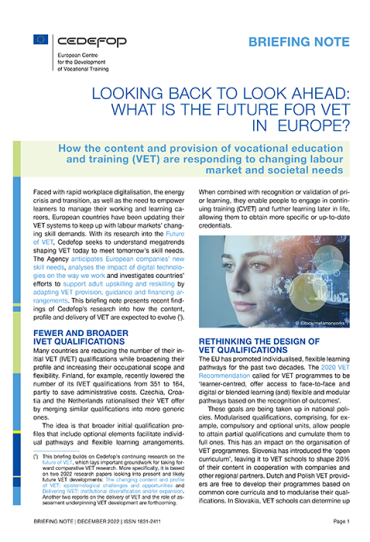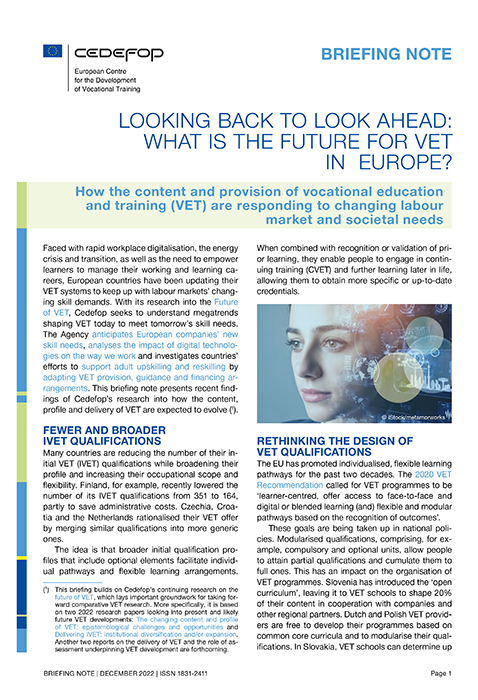In the current, fast-changing education and labour market landscape, there is a need to promote more learner-centred strategies and to build bridges between initial and continuing vocational education and training (VET). Cedefop’s latest briefing note on the future of VET provides insights into how training content and provision are changing to respond to labour markets’ rapidly evolving skill needs.
Many countries have rationalised their initial VET (IVET) approach, merging similar qualifications into more generic ones while broadening their profile and increasing their occupational scope and flexibility. When these qualifications are combined with recognition or validation of prior learning, they enable people to engage in continuing training (CVET) and further learning later in life, and to obtain more specific or up-to-date credentials.
Today, general subjects such as maths, science and languages, as well as theoretical vocational subjects, are mostly taught in classroom settings. Practical vocational learning takes place at the workplace or in VET school workshops. Occupational skills evolve, reflecting technological and societal developments, but transversal skills, acquired in different settings, are for life and allow people to cope with change.
Workplace learning has increased across Europe, often at the expense of classroom instruction. The workplace is no longer seen as a place to practice classroom knowledge but rather as one allowing learners to acquire skills that cannot be taught in school settings.
In recent years, most EU countries have given greater autonomy to VET schools and local authorities, acknowledging that they are best placed to respond to emerging local skill needs. And IVET schools increasingly accommodate adult learners, as modularised qualifications make IVET more relevant for them.
Learners taking up vocational training bring increasingly different expectations and capacities. It is important to design national curricula with close reference to these, allowing providers to adapt their training offer to different learners at the right level and in the right format. Supported by well-integrated guidance and validation arrangements, targeted individualised training provision will help ensure VET’s future relevance and quality.
Read more in our latest briefing note.

